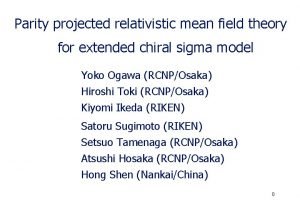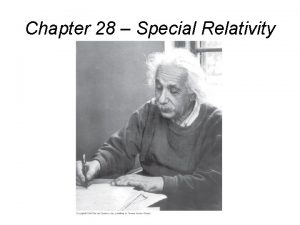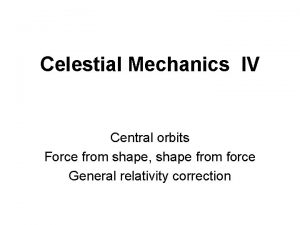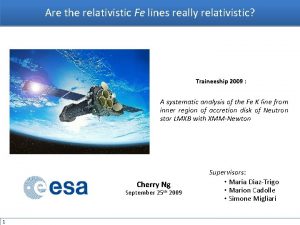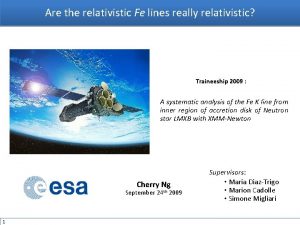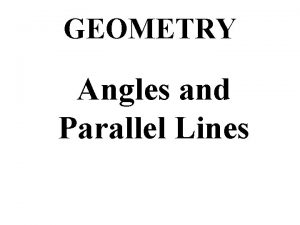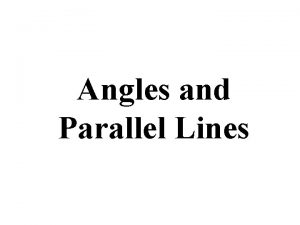Are the relativistic Fe lines really relativistic Traineeship












- Slides: 12

Are the relativistic Fe lines really relativistic? Traineeship 2009 : A systematic analysis of the Fe K line from inner region of accretion disk of Neutron star LMXB with XMM-Newton Cherry Ng September 25 th 2009 1 Supervisors: • Maria Diaz-Trigo • Marion Cadolle • Simone Migliari

Outline 1. Objectives Fe K emission line Inner region of the accretion disk 2. Data analysis Importance of pile-up treatment 3. Results Relativistic Fe K line ? 4. Conclusion 2 Outline

Neutron Star Low-mass X-ray binaries (NS LMXB) Cackett et al (2008) Ap. J 674: 415 -420 Roche-lobe overflow Low-mass star Weakly magnetized NS Accretion disk • Fe K emission line • Typical energy : ~ 6. 5 ke. V 3 Objectives

Neutron Star Low-mass X-ray binaries (NS LMXB) • Systematic analysis • All publicly available bright Neutron Star LMXB • XMM-Newton 26 observations 17 sources 4 Objectives

Treatment of Pile-up No. of counts normalized to 1 Single & Double-px event pattern plot of Ser X 1 Comparison of Ser X 1 spectra before and after pile-up removal Single-px event Excess emission Double-px event Before pile-up removal After pile-up removal • Common problem of bright sources • 2 photons of lower energy read as 1 photon of higher energy • Distortion of spectra 5 Data analysis

Evolution of spectrum fit abs ( gaussian +diskbbody+bbodyrad + Fe K line ) +gaussian calib 1. 84 ke. V calib 2. 28 ke. V Emission 1 ke. V 6 Data analysis

Gaussian & Laor comparison on 4 U 1543 -62 Gaussian Laor Energy : Sigma : 0. 33± 0. 13 Laor index : 0. 97 Inclination : EW : Reduced X² : Rin: EW : Reduced X² : 32 ± 9 e. V 0. 96 • Narrow line width • Large inner radius • Similar X² • Insignificant evidence of asymmetric profile 7 Data analysis

Comparing results with published data Result from Cackett et al (2009) Result from my project 8 Results

Statistics on equivalent width Correlation between EW and n° of counts Correlation between EW and error • Broad line – result of bad statistics • Unlikely to be due to broadening mechanism of relativistic effect 9 Results

Conclusion • Relativistic origin for the broadening of Fe cannot be claimed • Further higher resolution spectroscopic data needed to place better constraints on possible contribution to the line emission from various parts of disk Thank you ! 10 Conclusion

Distribution of energy and sigma Distribution of energy of centroid of Fe line Distribution of sigma of Fe line

Background figure 35: Background spectrum for the pn camera during an observation with the filter wheel in the CLOSED position (top: single events, bottom: double events) in the energy range 0. 2 -18 ke. V. The prominent features around 1. 5 ke. V are Al-K, at 5. 5 ke. V Cr. K, at 8 ke. V Ni-K, Cu-K, Zn-K and at 17. 5 ke. V (only in doubles) Mo-K fluorescence lines. The rise of the spectrum below 0. 3 ke. V is due to the detector noise. The relative line strengths depend on the (variable) incident particle spectrum.
 Mikael ferm
Mikael ferm Traineeship klimaat
Traineeship klimaat European court of human rights traineeship
European court of human rights traineeship Burness paull traineeship
Burness paull traineeship Trainee european commission
Trainee european commission Erasmus traineeship unige
Erasmus traineeship unige European space agency jobs
European space agency jobs Flanders traineeship platform
Flanders traineeship platform Apprenticeship and traineeship act 2001
Apprenticeship and traineeship act 2001 Relativistic mean field theory
Relativistic mean field theory Relativistic kinetic energy
Relativistic kinetic energy Relativistic equations of binet
Relativistic equations of binet Bertrand postulate
Bertrand postulate









